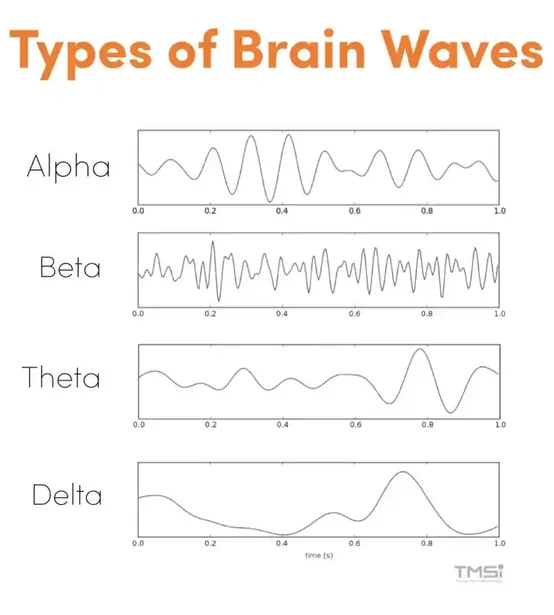1.5 Sleep
Consciousness: Refers to our awareness of ourselves and environment (thoughts, feelings, actions)
Types of consciousness:
Wakefulness: The state of full awareness.
Sleep: The state with reduced external awareness but continued internal awareness
Altered states: Daydreaming, meditation, drug-induced states, hypnosis.
Levels of Consciousness:
- Conscious level: Full awareness of your surroundings and thoughts.
-Preconscious level: Thoughts that you are not aware of but can access anytime you need to.
-Nonconscious level: Processes that are totally inaccessible to conscious awareness
-Unconscious level: Repressed memories and unacceptable sexual and aggressive urges that influence behavior without the individual being aware of it.
-Subconscious level: Mental processes that influence behavior and thought processes without the individual being aware of it.
Circadian Rhythm:
The internal biological clock that regulates physiological processes.
Such as : The Sleep/Wake Cycle
Tells your body when and when not to wake up or sleep.
Light hits your eyelids in the morning, activating light sensitive retinal proteins that trigger signals to the brain’s suprachiasmatic nucleus in the hypothalamus. Then it triggers the pineal gland to decrease melatonin levels in the body.
The opposite happens at night. The darkness triggers the suprachiasmatic nucleus to signal to the pineal gland to increase melatonin levels in the body, making you sleepier.
Disruptions to the circadian rhythm
Jet lag: Travelling across many time zones
Shift work: Working irregular hour shifts (morning or night shifts)
Brain Waves:

Waves Mental State
Delta waves → Deep Sleep
Theta waves → Drowsy
Alpha waves → Relaxed
Beta waves → Focused
B A T D T A B
Beta → Awake
Alpha → NREM1
Theta → NREM2
Delta → NREM3
Theta → NREM2
Alpha → NREM1
Beta → REM
Sleep Cycle
-NREM1: Lightest sleep (5-10 mins):
Hypnogogic sensations and sleep hallucinations occur
-NREM2: Light sleep (10-20 mins):
Sleep spindles (bursts of neural activity)
-NREM3: Deep sleep (approx. 30 mins):
Body is in its most restful state (heart rate, blood pressure, and body temperature drop.)
Sleep talking/walking usually occurs during this stage.
-REM (approx. 10 mins):
Person exhibits rapid eye movement
In REM, the brain but the body is asleep (muscle atonia)
Walking up during REM causes sleep paralysis.
REM Rebound occurs when someone is REM sleep deprived.
Dreaming occurs during this stage.
Sleep Disorders
Insomnia → Most common:
Persistent difficulty falling asleep, staying asleep, or obtaining restorative sleep.
Results in daytime fatigue.
Treatments:
Lifestyle changes
Stress management
Medication → Melatonin
Narcolepsy → Rare:
Uncontrollable urge to fall asleep that may occur at any time at any instant. They fall into a direct REM sleep
Symptoms:
Cataplexy (sudden muscle weakness)
Sleep Paralysis
Hallucinations
Treatments:
Medications
Strategic napping hours
REM Sleep Behavior Disorder (RBD):
Muscle atonia during REM sleep is incomplete or completely absent, causing people to enact their dreams physically
Symptoms: Dream enactment → May cause injuries
Treatments:
Medications → Clonazepam
Safety measures
Sleep Apnea:
Breathing stops and starts repeatedly during sleep
Leads to daytime fatigue and never feeling well rested
Types:
Obstructive Sleep Apnea (OSA): The throat muscles relax, obstructing the airway passage
Central Sleep Apnea: The brain fails to send proper signals to control breathing
Complex Sleep Apnea Syndrome: Combination of OSA and central sleep apnea
Symptoms:
Loud snoring
Gasping for air
Never feeling well rested
Treatments:
Weight loss
CPAP machine
Surgery → Severe cases
Somnambulism:
Sleep walking / Sleep talking
Treatments:
Safety measures
Medications
Regulating sleep schedule.
Why Do We Sleep And Dream?
Sleep Theories:
Restoration Theory: States that sleep serves to restore cognitive and physical resources that were used up while awake.
Memory Consolidation Theory: States that sleep is essential for strengthening and stabilizing new memories.
Dream Theories:
Activation-Synthesis Theory: States that dreams are just the brain’s attempt to make sense of random neural activity while asleep. Saying that dreams have no meaning
Consolidation theory of dreams: States that dreams play a role in processing new information into existing networks